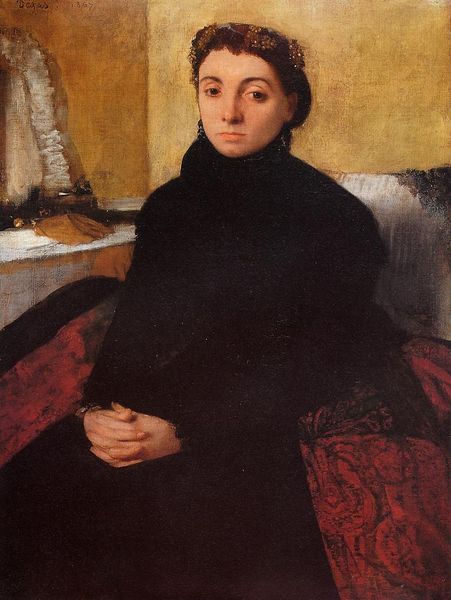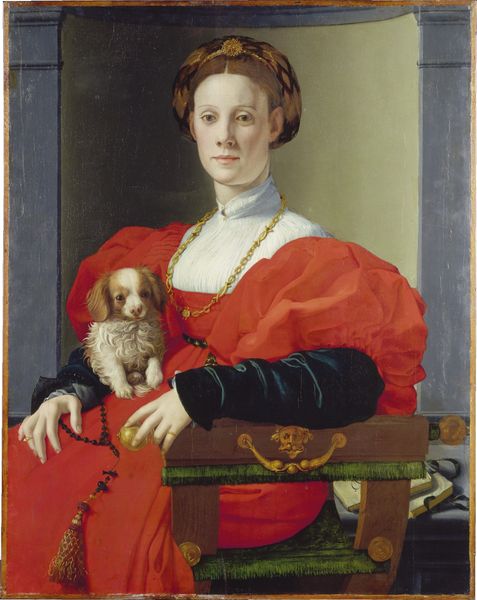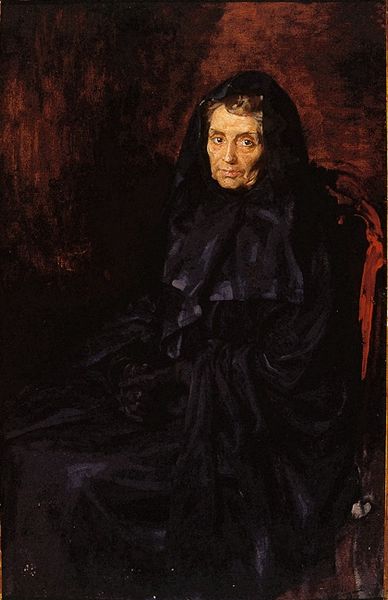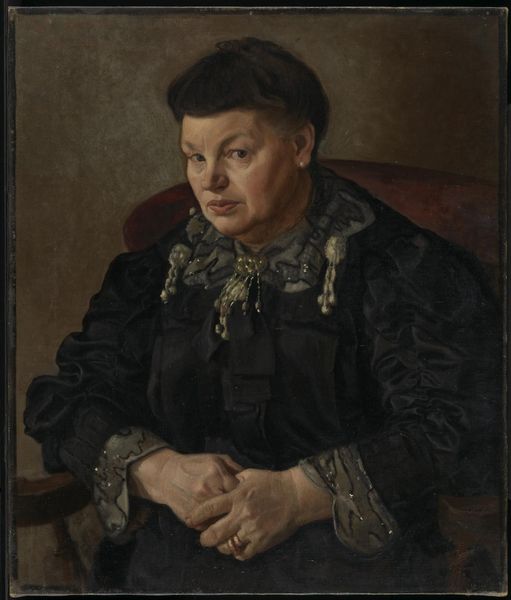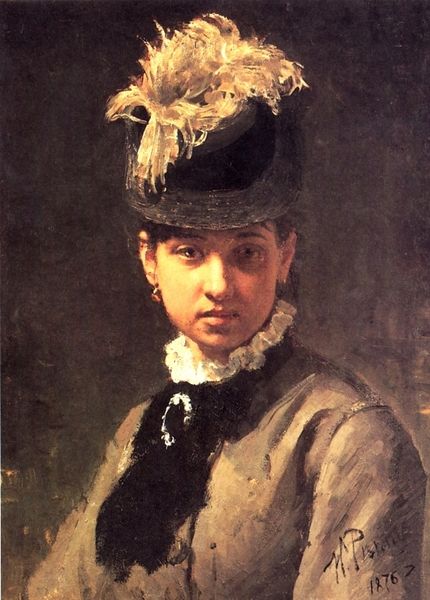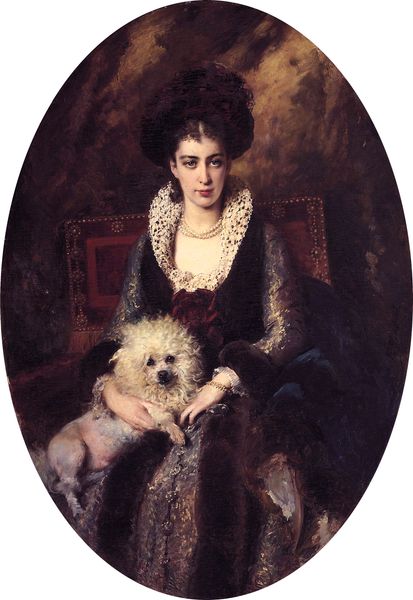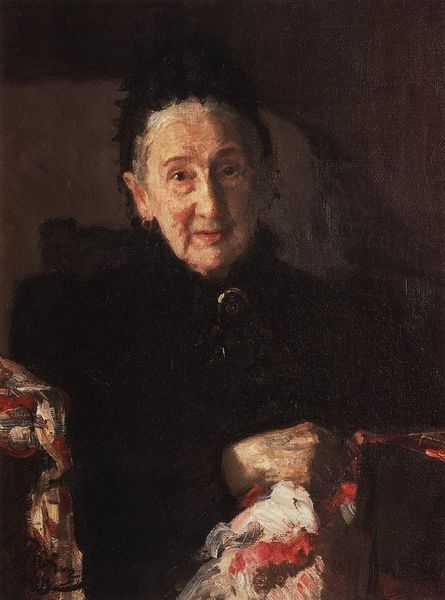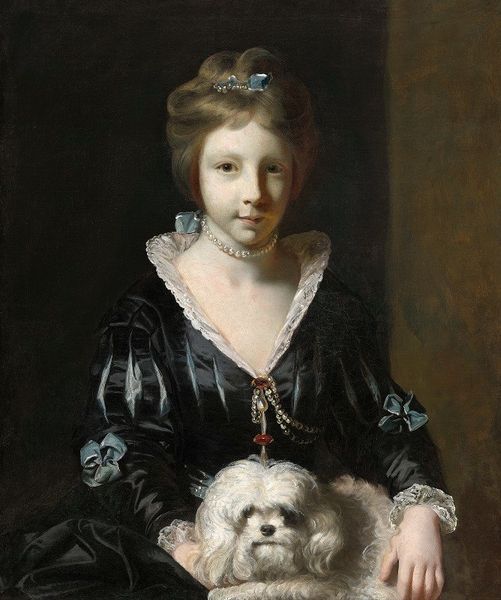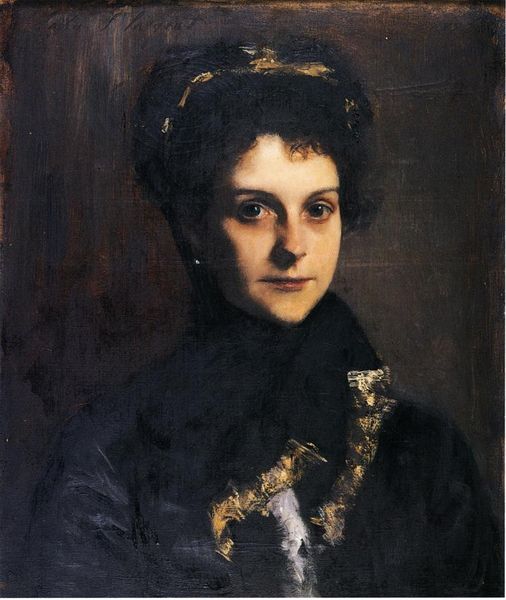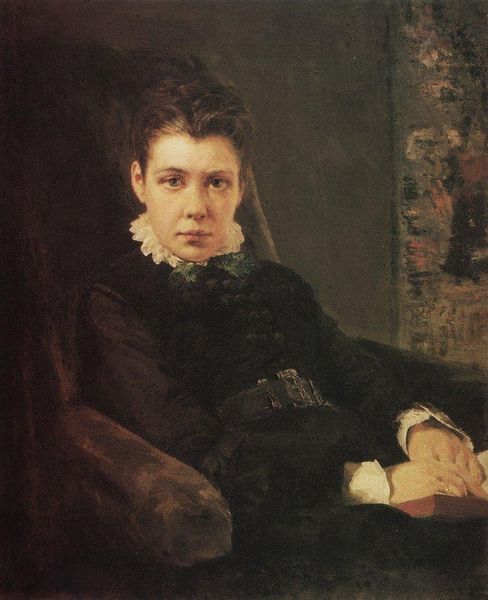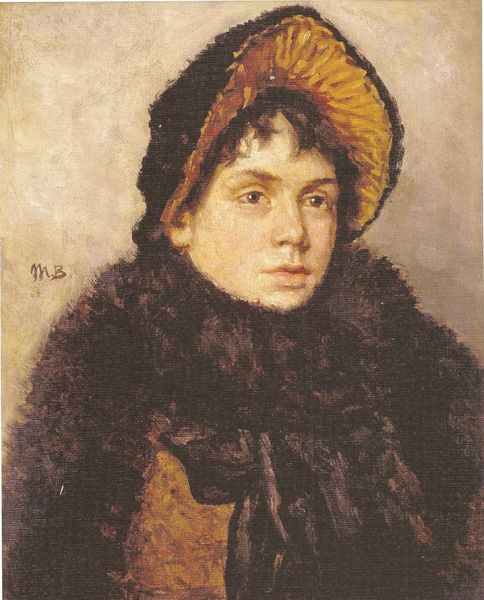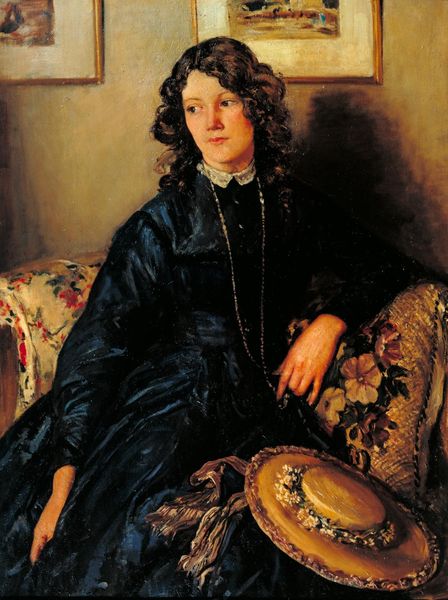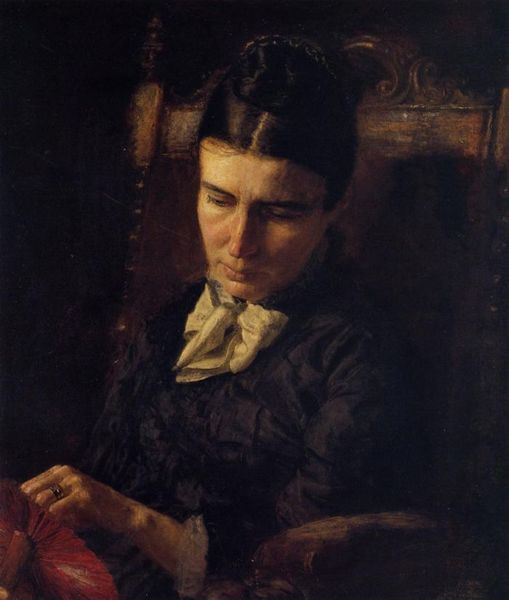
Dimensions: 75 x 66 cm
Copyright: Public domain
Editor: We’re looking at Ilya Repin’s "Portrait of Polixena Stasova" from 1879, an oil painting. The subject, an older woman, sits in a large chair, staring intently out at the viewer. It feels very formal, almost severe. What strikes you about this piece? Curator: What stands out to me is the interplay between the subject's social standing and the material choices made by Repin. Note the sumptuous, albeit subdued, colors in the backdrop and chair, likely expensive dyes indicating status. Yet, Stasova herself is in simple, dark clothing. How do these elements speak to the means of production of the portrait, and perhaps Stasova's place within the social fabric of late 19th century Russia? Editor: That’s interesting. I hadn’t really considered the materials themselves. Are you suggesting the stark contrast isn't just aesthetic, but a reflection of economic realities? Curator: Precisely! Consider the labour involved: the production of the oil paints, the weaving of the chair, the crafting of her lace cuffs, all represent specific skills and levels of work within society. Does the artist's hand, visible in the brushstrokes, align or clash with the subject’s representation? Editor: I see what you mean. The visible brushstrokes do give it an impressionistic feel, kind of at odds with the formality. So, looking at art this way really opens it up beyond just what's on the surface. Curator: Absolutely. It's about tracing the relationships, the labour, and the systems that made the artwork – and the subject's portrait – possible. What further insights can a focus on materiality bring? Editor: I will certainly look at portraiture with new eyes! It makes you think about what went into the art rather than just seeing it.
Comments
No comments
Be the first to comment and join the conversation on the ultimate creative platform.
